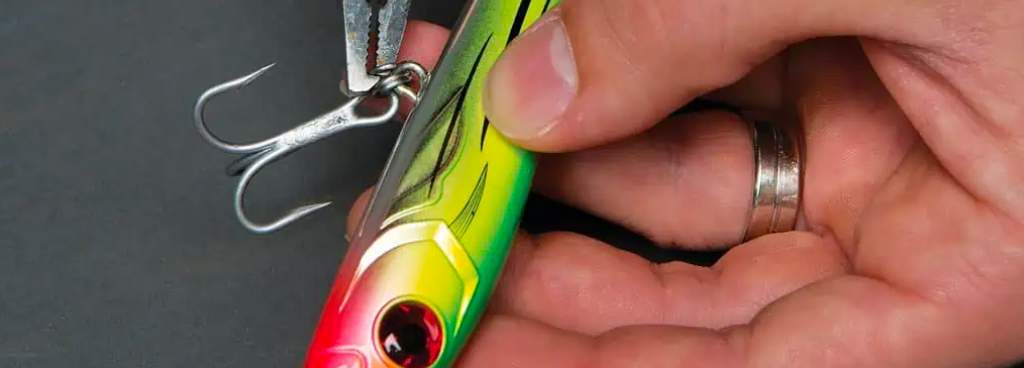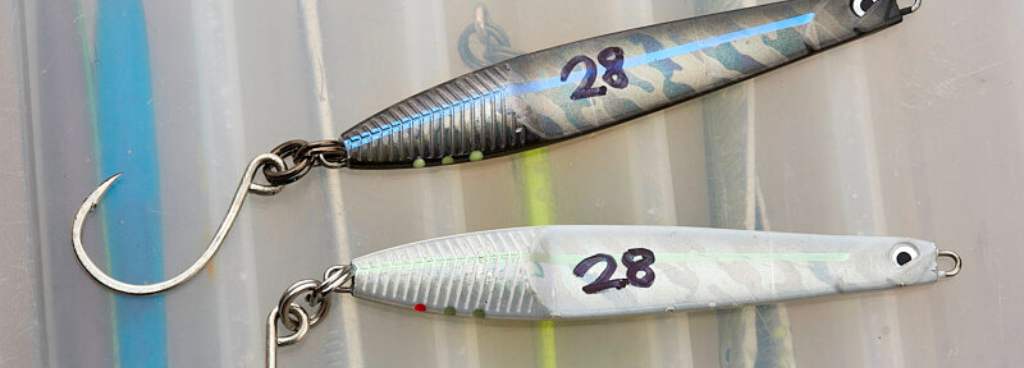Stories Worth Reeling In...
Last Updated on October 13, 2023
When it comes to fishing, it’s not just about your rod, reel, and lures. There are smaller components that play a pivotal role in ensuring your fishing gear functions seamlessly. One such unsung hero of fishing tackle is the split ring.
Split rings are often overlooked, but their importance in the world of angling cannot be overstated. These small, circular pieces of metal serve as the linchpin that holds many aspects of your tackle together.
By the end of this article, you’ll have a newfound appreciation for these inconspicuous yet indispensable components of your fishing gear.
Table of Contents
A split ring is a small, circular piece of metal with a tiny cut that allows it to open and close like a miniature spring-loaded keychain ring. This unique design is what makes them indispensable in the realm of fishing tackle.

The primary function of split rings in fishing tackle is to act as connectors. They are often used to attach various components of your fishing gear. They ensure that these components remain securely attached during the cast, retrieval, and while battling that trophy fish.
Anglers have diverse needs, and the fishing industry has responded with a variety of split-ring options. Let’s delve into some common types:
Standard Split Rings: These are the workhorses of the fishing world. Standard split rings are versatile and suitable for a wide range of applications. Their medium-strength makes them a reliable choice for securing hooks to lures or connecting components in your tackle.
Heavy-Duty Split Rings: Heavy-duty split rings come to the rescue. These rings are stronger and more robust, designed to withstand the powerful fights these larger fish put up. They are often crafted from thicker, more durable materials to ensure they don’t fail under extreme pressure.
Light-Duty Split Rings On the flip side, finesse anglers working with smaller lures or targeting smaller species may opt for light-duty split rings. These rings are finer and more delicate, ideal for applications where strength isn’t the primary concern.
Snap Rings: Snap rings, often referred to as “snap swivels,” have a unique design. They feature a small, integrated clasp that allows for quick lure changes without the need for pliers.
Ball Bearing Swivels with Split Rings: For those looking for added flexibility and reduced line twists, ball-bearing swivels with attached split rings offer a superb solution. These swivels, featuring a smooth-rotating ball bearing, prevent your line from coiling during retrieves. The split ring on the other end allows for easy lure attachment.
Titanium Split Rings: If corrosion resistance is a priority, especially for saltwater anglers, titanium split rings are an excellent choice. These rings can endure the harshest saltwater conditions without corroding, ensuring your gear stays reliable even after countless trips to the ocean.

In the intricate world of fishing tackle, split rings are often unsung heroes. Their importance becomes evident when you dive into the various fishing equipment and scenarios where they’re nothing short of essential.
1. Lure Attachments
Lures can come with all sorts of attachment points, like small holes, loops, or even solid rings. But when they don’t, split rings bridge the gap between your line and your favorite lures. This secure connection ensures your lure moves naturally in the water, increasing its appeal to your target species.
2. Hook Connections
Hooks, particularly treble hooks often used with lures, frequently come with an eyelet for easy attachment. Whether you’re jigging, casting, or trolling, hooks and split rings are a dynamic duo that ensures your catch doesn’t escape.
3. Tackle Customization
Anglers are a resourceful bunch, and many of us enjoy customizing our gear to suit our specific needs. Split rings come in handy here, as they are vital for personalizing your tackle.
Lure action is a critical factor in attracting fish. It’s the movement, wobble, or vibration of the lure that entices your target species to strike. Split rings are an often-overlooked part of the equation that can greatly affect a lure’s action.
Certain lures benefit from specific split ring choices:
No, split rings are used in various fishing scenarios, both for artificial lures and natural bait. They are versatile connectors that can be adapted to many fishing styles.
While one size of the split ring can work for many scenarios, having a selection of sizes and materials can help you adapt to different fishing conditions and lure types effectively.
Small split rings may be challenging to open and close with your fingers. A split ring tool or a pair of split ring pliers can make this task much easier.
It’s possible to reuse split rings if they’re in good condition. However, considering the relatively low cost of split rings, it’s often more practical to use new ones to ensure optimal performance.
Now that you’re armed with knowledge about split rings, we encourage you to explore and experiment. Take the time to match your split rings to your unique angling needs. Try out various combinations to see how they affect the action of your lures and the overall performance of your tackle.
Remember that in fishing, the smallest details can have the most significant impact. So, the next time you’re preparing your tackle box for a fishing adventure, don’t forget to pay attention to these unsung heroes, the split rings. Happy fishing!